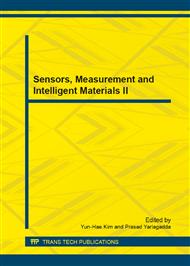p.585
p.590
p.594
p.598
p.603
p.609
p.616
p.621
p.628
Active Damping Control for an Electric Vehicle Using Robust Controller
Abstract:
For an electric vehicle, during pedal tip in/out, driveline torsional resonance frequency can be excited by a quick motor torque response. As a result, noticeable oscillations can occur in the vehicle acceleration without adequate controls, which can cause discomfort for passengers. This paper proposes robust controllers to damp driveline oscillations during pedal tip in/out for an electric vehicle. Based on control-oriented system models that take account of various parameter uncertainties and unmodeled dynamics, robust controllers were designed by using the mu synthesis method. The results of the simulation demonstrate the effectiveness of the proposed control algorithms.
Info:
Periodical:
Pages:
603-608
Citation:
Online since:
December 2013
Authors:
Price:
Сopyright:
© 2014 Trans Tech Publications Ltd. All Rights Reserved
Share:
Citation:


